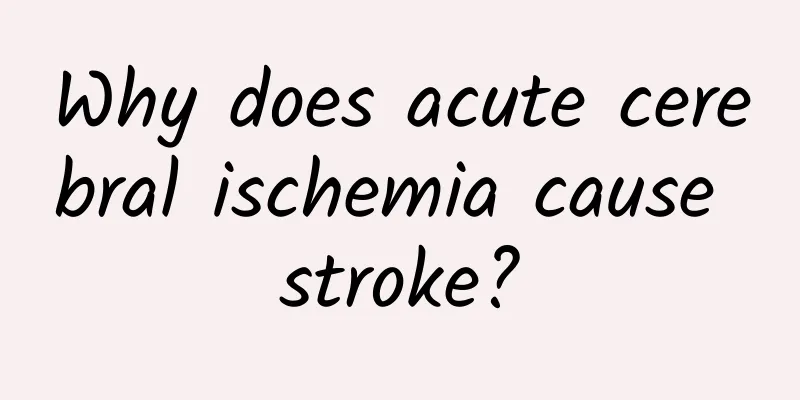Why does acute cerebral ischemia cause stroke?

|
I. Ischemic Stroke Ischemic stroke is the most common type of stroke. An ischemic stroke occurs when an artery in the brain is blocked. There are two types of ischemic stroke: (i) Embolic stroke: A blood clot or plaque fragment forms in the heart or in the large arteries leading to the brain, moves with the blood flow in the arteries to the brain, blocks blood vessels in the brain and causes a stroke. (ii) Thrombotic stroke: Thrombotic stroke is a blood clot that forms in the blood vessels of the brain and does not move with the blood flow. The blood clot will interrupt blood flow and cause a stroke. 2. Acute ischemic attack (TIA) If an artery in the brain or an artery leading to the brain is blocked for a short time, blood flow can slow or stop. This can cause a transient ischemic attack, sometimes called a mini-stroke. The main symptoms of a transient ischemic attack include: (i) Numbness, weakness, or paralysis of the face, arms, or legs, usually on one side of the body. (ii) Loss of vision or diplopia in one or both eyes. (iii) Difficulty speaking or understanding others. (iv) Loss of balance or coordination. (v) Severe headache of unknown cause. When a transient ischemic attack occurs, the arteries either become unblocked after a short time or new pathways are created to ensure adequate blood flow to the brain. Although the symptoms of a transient ischemic attack are short-lived, they are a serious warning that you may or will have a stroke. III. Assessment Basis of Ischemic Stroke - Patency of Blood Flow in Arteries 1. Unimpeded access Blood flows easily through unobstructed arteries. (ii) There is obstruction Arteries may become blocked by plaque (a fatty substance in the artery walls) or blood clots, which can reduce blood flow to the brain and cause a stroke. Atherosclerosis is caused by a buildup of cholesterol or plaque. 3. Dissolution of blood clots Transient ischemic attacks (TIAs) have the same signs and symptoms as strokes, but they last only a short time. Because the plaque or blood clot breaks up and blood flow gradually resumes to the brain, no permanent damage to brain cells occurs. However, TIAs are often a precursor to acute strokes and need to be assessed by a doctor to determine the risk level. 4. The impact of blood supply on brain tissue If a blood clot blocks an artery in the brain, brain cells begin to die in areas of downstream brain tissue that do not have adequate blood flow. 5. How to locate the location of cerebral vascular obstruction - arteriography Your stroke center doctor will take an X-ray of your brain, called an arteriogram or angiogram. A dye is injected into the blood vessels leading to the brain. The dye shows up on the X-ray and helps locate blocked, narrowed, or damaged blood vessels in the brain. |
Recommend
How long does it take to get menstruation after abortion?
Surgical abortion is a popular method of abortion...
Can I eat mung beans during menstruation?
The menstrual period every month is a very import...
First day of work! This spring health guide will help you start the year full of vitality!
Today is the eighth day of the first lunar month....
TrendForce: Global smartphone production continues to decline by about 6.6% in Q2 2023, reaching only 270 million units
According to TrendForce, after the global smartph...
How to effectively enlarge breasts after weaning?
Many postpartum mothers find that their breasts s...
Induced labor at 6 months of pregnancy
When women get married and become pregnant, if th...
What should women do if they have anal prolapse?
I believe everyone is familiar with the disease o...
What medicine is effective for the symptoms of candidal vaginitis
When women develop symptoms of candidal vaginitis...
Blood sugar is well controlled, so why do blood vessels become clogged? More requirements for diabetics to prevent diseases
A diabetic patient in his 60s told Huazi that he ...
How to improve Chinese composition? How to write a composition in the right format?
If you like to think and study, you will find tha...
How to use cleaning solution to clean the vulva?
As we all know, the structure of the female repro...
What causes hypothyroidism during pregnancy?
Pregnant women are prone to some diseases during ...
Shaving your legs with an eyebrow razor
The hair on my legs is so long and I want to shav...
What are the dangers of subserosal uterine fibroids?
Uterine fibroids are a common disease that is ext...









